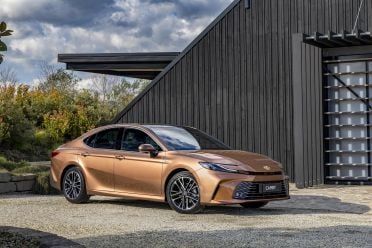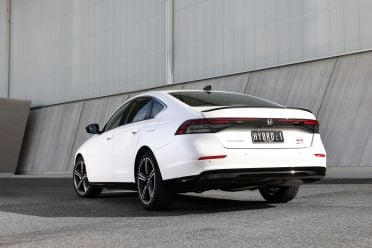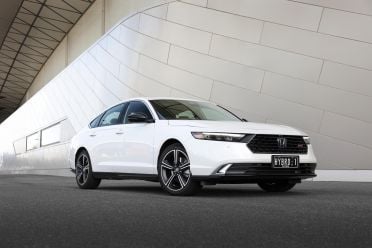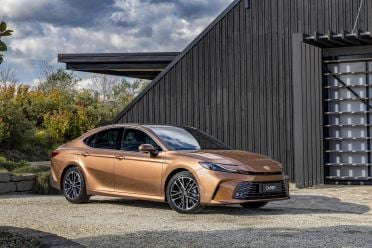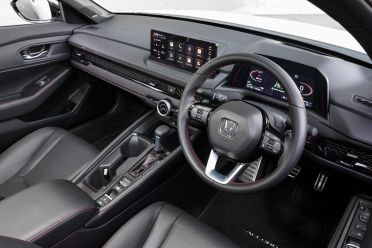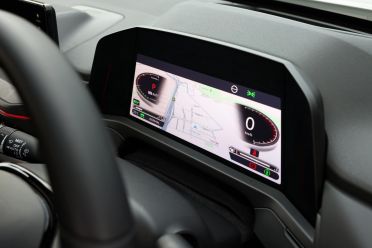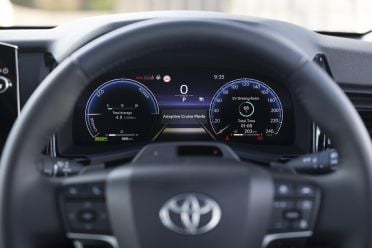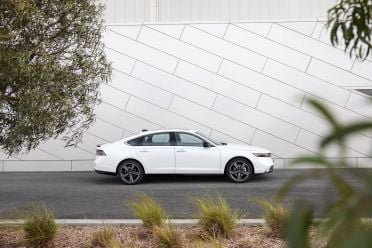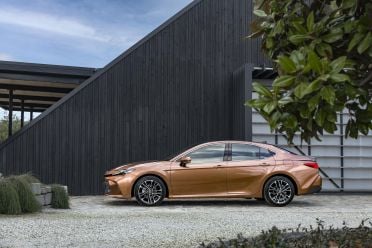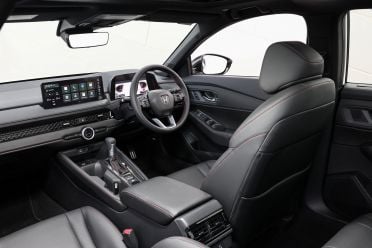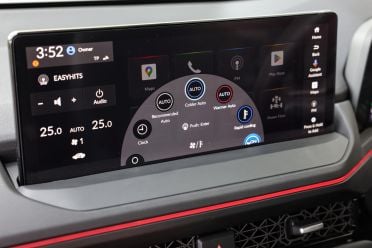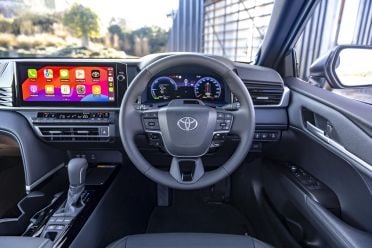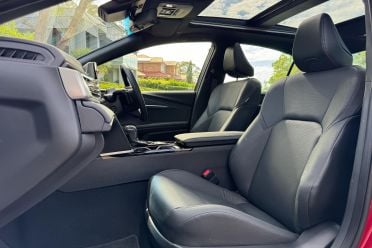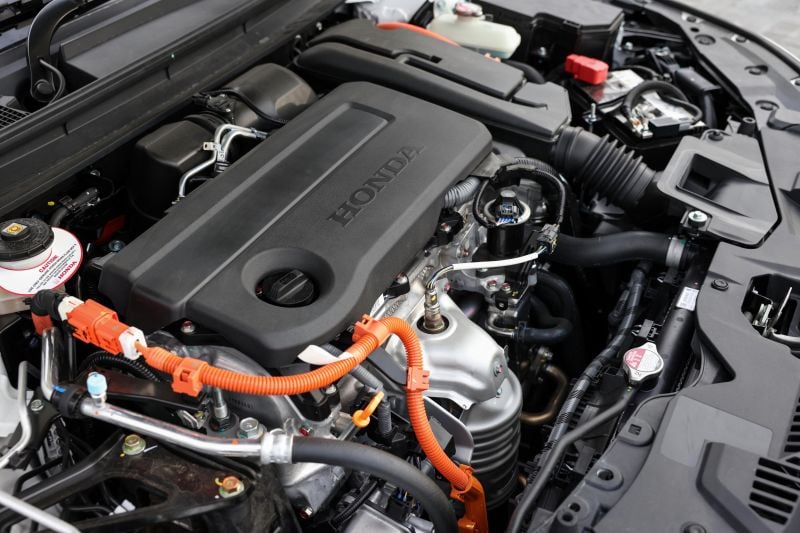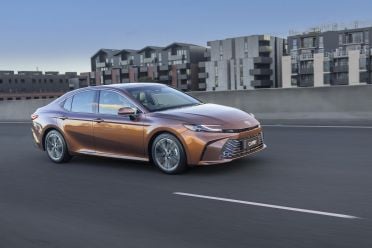The standard household automobile has modified so much during the last 20 years.
In the present day, SUVs have taken over from typical three-box sedans because the default choice for Australian new automobile customers.
Consequently – and even lengthy after the demise of keystone automobiles just like the Holden Commodore and Ford Falcon – the selection of mainstream mid-size passenger sedans has diminished dramatically. Just a few legacy fashions stay, such because the Honda Accord and Toyota Camry we’re evaluating right here.
And even then, these two are taking part in in a distinct league to their predecessors by trying to lure empty-nesters away from luxurious manufacturers, moderately than attracting budget-conscious households.
How nicely do they try this, and which one is probably the most engaging proposition? Nicely, let’s discover out.
How a lot?
The Honda Accord has been a mainstay for the Japanese model because it first arrived in 1977. Now in its Eleventh-generation, it acts as the corporate’s flagship mannequin with a single variant – the fully-loaded, hybrid-only e:HEV RS that instructions an eye-watering $64,900 drive-away pricetag.
The Toyota Camry, alternatively, is extra accessible with a three-variant lineup that begins at $39,990 (plus on-road prices) for the entry-level Ascent, with the mid-range Ascent Sport asking $3000 extra.
The range-topping SL that we’re evaluating right here towards the Accord RS is priced from $53,990 plus on-roads.
The worth hole closes significantly when considering the extra statutory expenses, however the Camry nonetheless comes out in entrance by round $5000.
What do you get?
So far as on-paper specs are involved, each the Accord RS and Camry SL are loaded with numerous commonplace gear. And there’s not a lot to separate them.
They each trip on 18-inch alloy wheels, have LED headlights, panoramic sunroofs and keyless entry, whereas their cabins are cloaked in leather-based trim and have twin digital screens, power-adjustable entrance seats, head-up shows, and dual-zone local weather management with rear vents.
The Camry has two 12.3-inch items for the instrument cluster and infotainment system, whereas the display screen in entrance of the driving force within the Accord is barely smaller at 10.2 inches.
Each have wi-fi smartphone mirroring and Bluetooth connectivity, in addition to a number of USB energy retailers, embedded satellite tv for pc navigation, DAB+ digital radio and wi-fi telephone chargers. However the Accord has built-in Google Maps, Google Assistant and Google Play, and a 12-speaker Bose audio system , whereas the Camry’s JBL system has 9 audio system.
The Honda makes use of the audio system to scale back undesirable exterior noises by way of Energetic Noise Management expertise, and has adjustable multi-coloured ambient inside lighting.
Are they secure?
The Toyota Camry has a most five-star ANCAP score underneath the newest (2024) testing protocols, whereas the Accord has but to be assessed by the impartial security authority.
Nevertheless, each are geared up with a complete array of superior security methods that features:
- Autonomous Emergency Braking (AEB)
- Adaptive Cruise Management
- Blind spot warning
- Lane departure warning
- Lane conserving help
- Visitors signal recognition
- Driver monitoring
- Entrance and rear parking sensors
- Eight airbags
- Computerized high-beam
- Reverse digital camera
- Rain-sensing wipers
- Head-up show
The one minor variations are that the Camry has a digital rear-view mirror, whereas the Accord has a 360-degree parking digital camera.
What are they like inside?
When it comes to the house they take up on the street, the Accord and Camry have an virtually an identical footprint.
The Honda is fractionally longer, wider and taller – and in addition has a bit of additional between the entrance and rear axles – however we’re speaking millimetre variations right here.
What that equates to contained in the cabin is that each have beneficiant quantities of inside house with glorious headroom for all, and sufficient room for 3 throughout the rear bench.
The Accord has extra cargo house within the boot than the Camry (570 litres in comparison with 524L), however each present sufficient room to deal with the weekly duties of a full household, in addition to vacation getaways.
| Dimensions | Honda Accord e:HEV RS | Toyota Camry SL |
|---|---|---|
| Size | 4975mm | 4920mm |
| Width | 1862mm | 1840mm |
| Peak | 1449mm | 1445mm |
| Wheelbase | 2830mm | 2825mm |
| Cargo capability | 570L | 524L |
The Honda seems to be and feels a bit of extra fashionable in its design with the central touchscreen positioned like a pill on the highest of the sprint, whereas the Camry’s is built-in into the sweeping air vents which seems to be a bit bulkier.
It additionally has some good touches just like the digital show within the centre rotary controller, which may present a myriad of features together with the time, temperature controls and present audio output, and there’s a cross-hatched sample throughout the air vents that divides the dashboard.
There’s two giant cupholders within the centre console and a big tray with a wi-fi telephone charger on the base of the sprint, a coated bin between the seats and deep door pockets giant sufficient for water bottles.
The entrance seats are tremendous comfy and provide loads of adjustment, and all of the contact factors are good and tactile with prime quality supplies.
The Camry seems to be and feels a bit of extra dressed-up than the Accord and, due to this fact, can’t disguise its entry-level roots as nicely with cheaper plastics masking the sprint and door playing cards.
However even nonetheless, it’s a genuinely good place to be, with entrance seats which are equally supple and provide barely extra lateral assist, plus heating and air flow, which is a noticeable omission from the Accord, particularly contemplating its worth premium.
What’s underneath the bonnet?
On face worth, there are numerous similarities about what powers the Accord and Camry. Each have a lean-burning petrol engine assisted by an electrical motor (or two within the case of the Accord), which drive the entrance wheels by way of a constantly variable automated transmission (CVT).
| Specs | Honda Accord e:HEV RS | Toyota Camry SL |
|---|---|---|
| Engine | 2.0-litre 4-cyl petrol/electrical hybrid | 2.5-litre 4-cyl petrol/electrical hybrid |
| Engine outputs | 108kW | 138kW |
| Electrical motor outputs | 135kW | 100kW |
| System outputs | 152kW / 335Nm | 170kW / NA |
| Battery | 1.04kWh | 4Ahr |
| Transmission | CVT automated | CVT automated |
| Drive kind | Entrance-wheel drive | Entrance-wheel rive |
| Weight | 1609kg | 1625kg |
| 0-100km/h (claimed) | N/A | 7.2 seconds |
| Gas financial system (claimed) | 4.3L/100km | 4.0L/100km |
| Gas tank capability | 48L | 50L |
| Gas requirement | 91-octane commonplace unleaded | 95-octane premium unleaded |
| CO2 emissions | 98g/km | 91g/km |
| Braked tow capability | N/A | 400kg |
Nevertheless, they do act barely totally different in the way in which every of them combines the 2 propulsion sources.
The Camry, for starters, has a larger-capacity four-cylinder petrol engine that produces 138kW of energy and 221Nm of torque, plus a single electrical motor linked to the gearbox that gives a further 100kW and 208Nm of help, powered by a 4Ahr lithium-ion battery pack mounted behind the rear seats.
It is a typical parallel hybrid system in that the electrical motor is just used by itself when shifting away from a standstill, after which assists the petrol engine when on the transfer.
The web result’s a mixed most energy output of 170kW (Toyota doesn’t present a claimed most torque determine) and memorable mixed gas consumption of simply 4.0L/100km.
The Honda, alternatively, is a bit more superior. It has two electrical motors sandwiched inside its CVT transmission, a generator that primarily recharges the battery by way of regenerative braking, and a traction motor that helps the smaller-capacity 2.0-litre petrol engine that produces 108kW and 182Nm.
Nevertheless, each electrical motors can work collectively underneath acceleration and the petrol engine may be fully decoupled from the drivetrain when cruising, virtually reversing the connection between the 2 in comparison with the Camry.
This implies the Accord can drive extra usually – and at any pace – on battery energy alone.
But, regardless of its slight weight benefit, at 4.3L/100km the Accord can’t beat the Camry’s claimed gas consumption, though it’s tuned to make use of cheaper commonplace unleaded (91RON) petrol, the place Toyota recommends a minimal 95RON Premium for the Camry.
Value of possession
Toyota and Honda are famend for his or her long-term reliability, and each Japanese manufacturers present aftersales protection for 5 years or limitless kilometres. Each provide extensions if the automobile is maintained in line with the prescribed service schedule inside their authorised seller networks; Honda for an additional three years and Toyota for 2, however just for the engine.
In addition they present free roadside help (as much as eight years at Honda and 7 years at Toyota) and are among the many most reasonably priced to keep up by way of capped worth servicing schemes. The Accord prices simply $199 annually for the primary 5 years, whereas the Camry is fractionally pricier to service at $255 yearly over the identical time interval.
CarExpert’s Choose
It’s bewildering that these two sedans aren’t extra in style as a result of, for all of the automobile issues they do, they’re bloody good.
Each are exceptionally good to drive because of a cushty trip and sure-footed on-road dynamics, and each have genuinely spacious again seats, luxurious appointments and the newest in security and comfort tech.
However greater than something, they’re remarkably environment friendly for such giant automobiles, particularly in comparison with their mid-size SUV equivalents, that are dearer to personal.
Actually, the one factor that separates them is their worth tags, and in that regard the Camry comes out barely forward of the Accord.


